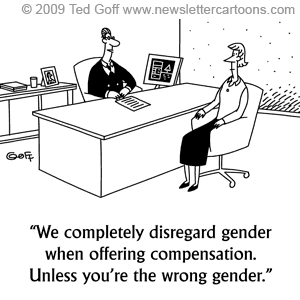Syllabus
This suit was filed as a class action on behalf of present or former female employees of petitioner Los Angeles Department of Water and Power, alleging that the Department’s requirement that female employees make larger contributions to its pension fund than male employees violated § 703(a)(1) of Title VII of the Civil Rights Act of 1964, which, inter alia, makes it unlawful for an employer to discriminate against any individual because of such individual’s sex. The Department’s pension plan was based on mortality tables and its own experience showing that female employees had greater longevity than male employees, and that the cost of a pension for the average female retiree was greater than for the average male retiree because more monthly payments had to be made to the female. The District Court held that the contribution differential violated § 703(a)(1), and ordered a refund of all excess contributions antedating an amendment to the Department’s pension plan, made while this suit was pending, that eliminated sexual distinctions in the plan’s contributions and benefits. The Court of Appeals affirmed.
Held:
1. The challenged differential in the Department’s former pension plan violated § 703(a)(1). Pp. 707-718.
(a) The differential was discriminatory in its “treatment of a person in a manner which, but for that person’s sex, would be different.” The statute, which focuses on fairness to individuals, rather than fairness to classes, precludes treating individuals as simply components of a group such as the sexual class here. Even though it is true that women as a class outlive men, that generalization cannot justify disqualifying an individual to whom it does not apply. There is no reason, moreover, to believe that Congress intended a special definition of discrimination in the context of employee group insurance, since in that context, it is common and not considered unfair to treat different classes of risks as though they were the same. Pp. 707-711.
(b) Though the Department contends that the different contributions exacted from men and women were based on the factor of longevity, rather than sex, and thus constituted a statutory exemption authorized for a “differential based on any other factor other than sex,” there is no evidence that any factor other than the employee’s sex accounted for the differential here. Pp. 711-713.
(c) This case is readily distinguishable from General Electric Co. v. Gilbert, 429 U.S. 125, for here the pension plan discriminates on the basis of sex, whereas the plan in Gilbert discriminated on the basis of a special physical disability. Pp. 714-717.
2. It was inappropriate for the District Court to allow a retroactive monetary recovery in this case. Pp. 718-723.
(a) Though a presumption favors retroactive relief where a Title VII violation has been committed, Albemarle Paper Co. v. Moody, 422 U.S. 405, the appropriateness of such relief in an individual case must be assessed. Here the District Court gave insufficient attention to the equitable nature of Title VII remedies. This was the first litigation challenging pension fund contribution differences based on valid actuarial tables, which the fund administrators may well have assumed justified the differential, and the resulting prohibition against sex-differentiated employee contributions constituted a marked departure from past practice. Pp. 719-721.
(b) In view of the grave consequences that drastic changes in legal rules can have on pension funds, such rules should not be given retroactive effect unless plainly commanded by legislative action. Pp. 721-723.
553 F.2d 581, vacated and remanded.
STEVENS, J., delivered the opinion of the Court, in which STEWART, WHITE, and POWELL, JJ., joined, in all but Part IV of which MARSHALL, J., joined, and in Part IV of which BURGER, C.J., and BLACKMUN and REHNQUIST, JJ., joined. BLACKMUN, J., filed an opinion concurring in part and concurring in the judgment, post, p. 723. BURGER, C.J., filed an opinion concurring in part and dissenting in part, in which REHNQUIST, J., joined, post, p. 725. MARSHALL, J., filed an opinion concurring in part and dissenting in part., post, p. 728. BRENNAN, J., took no part in the consideration or decision of the case.


Jung KimMar 6, 2019
The explanation of longevity is sex based discrimination, as it is used to justify why women pay more than men. Instead they should all be required to have the same rate, with options to increase or decrease but not based on “longevity”.
Reply
Comments above copied from original document
Abby Dompke
Abby DompkeMar 2, 2016
While it may be true that women live longer lives on average than men, this is not a good enough reason for them to have to pay extra towards their pension. This generalizes women and would be unfair for women who pass away earlier than average (if it weren’t unfair to begin with, that is). As Loren Trujillo commented last year, the best option would be to average the age of all employees without taking gender into consideration.
Reply
Comments above copied from original document
Deleted user
Deleted userFeb 25, 2015
Instead of generalizing based on sex perhaps the employer could have considered the overall payout of pensions among all individuals. That is to say an average among men and women and required payments into the pension based on the average amount. That may have helped to eliminate the sex based distinction. -L. Trujillo
Reply
Comments above copied from original document
Deleted user
Deleted userFeb 22, 2015
People living longer seems to be a general problem for pension plans. However, in terms of how it was used in this context. It seems like the many of the laws which discriminate against women use generalizations or “statistics” to support them, which as Justice Brennan (i think?) mentioned in one of his opinions should not be used.
Reply
Comments above copied from original document
Deleted user
Deleted userFeb 26, 2014
Basically the Court agreed that forcing women to put more into the pension than men just because “women live longer than men”, but when asked about a retroactive remedy to collect funds lost they said no? If this is the case, that hardly seems fair. The women were forced to put the money in meaning that they took significantly less home to their families at the end of the day in comparison to the men, so the appropriate remedy seems to be giving these women all of the excess money they put in back.
I’m not quite sure I understand how pensions work, if anyone knows could they please explain?
Negheen Sanjar, Team 3
Reply
Comments above copied from original document
Deleted user
Deleted userFeb 26, 2014
This makes me think of car insurance companies charging male drivers higher than women drivers because of studies that show that male drivers had more accidents than female drivers (or vice versa).
I actually called my insurance agent friend and asked. He told me that up until a certain age, sex does affect the quote a customer gets. And then after a certain age, sex is not a factor (30s+).
He said the way they calculate quotes is documented and given to the State, but it is not made public (on their website) or at the agencies.
Asma, Team 3
Reply
Deleted user
Deleted user
That’s really interesting, though it sounds kind of shady that they don’t release that information to the public. It’s a shame because I really wanted to know exactly how that gets calculated.
Negheen Sanjar, Team 3
Feb 26, 2014•Delete
Deleted user
Deleted user
“For instance, an 18-year-old male living in Nevada would pay an average of $6,268 a year to insure his sedan if he had the misfortune to grow up there. That’s 51% higher than what his twin sister would pay (assuming they have the same grades and driving records), who would fork out just $4,152 to insure an identical car, according to a CoverHound analysis.”
Read more: Race, Gender Affects Price of Products for Some Americans | TIME.com http://business.time.com/2012/05/18/when-consumers-pay-more-due-to-race-or-gender/#ixzz2uU5vm3GW
Feb 26, 2014•Delete
Deleted user
Deleted user
I remember hearing how part of the difference in quotes is the fact that statistically females get into more lower speed accidents and males get into more higher speed accidents which of course brings a higher risk of car damage, injury or death. This is most likely a reason that generally car insurance is more expensive for males than females.
Feb 26, 2014 (edited Feb 27, 2014)•Delete
Deleted user
Deleted user
Adam, that’s why this case made me think of insurance quotes. Because, just like how the calculation of insurance quotes takes into account gender based on statistics on accident proneness, the LA Department of Water and Power similarly used their own study that indicated the longevity of males versus females as reasoning for their gender-differentiated requirements.
I forgot to mention that my insurance agent friend said driving record was the #1 factor in calculating the quotes, and that all other factors followed that (age #2, gender #3). Additionally, car insurance companies also factor in some strange things such as the color of the vehicle. For example, white cars get lower quotes than other colors, because they’re more visible at night, and thus less susceptible to accidents. Red cars get higher quotes because statistics show a correlation of red cars and accident proneness. Etc…
So, can statistical data showing a correlation between race, age, sex, national origin, etc, be used to justify an otherwise discriminatory treatment/action as being not in violation of the Civil Rights Act? And possibly, as being “facially neutral”?
Asma
Feb 27, 2014 (edited Feb 27, 2014)•Delete
Comments above copied from original document
Kevin Lyles
Deleted user
Deleted userFeb 26, 2014
This issue in this case is whether the L.A. Department of Water and Power’s pension fund requirements violated Title VII of the Civil Rights Act of 1964, which prohibits discrimination against an employee or applicant for employment based on their sex, age, race, and/or national origin.
I found it interesting that it was argued the discrimination (different treatment) was based on “different classes of risk” and longevity, and not at all based on sex. Because, based on a study of mortality tables and its own experience, the Department determined that its 2,00 female employees, on the average, will live a few years longer than its 10,000 male employees.
Asma, Team 3
Reply
Comments above copied from original document
Deleted user
Deleted userFeb 26, 2014
Justice Stevens for writing for the Court: (comparison to Gilbert)
“In this case, however, the Department argues that the absence of a discriminatory effect on women as a class justifies an employment practice which, on its face, discriminated against individual employees because of their sex. But even if the Department’s actuarial evidence is sufficient to prevent plaintiffs from establishing a prima facie case on the theory that the effect of the practice on women as a class was discriminatory, that evidence does not defeat the claim that the practice, on its face, discriminated against every individual woman employed by the Department”